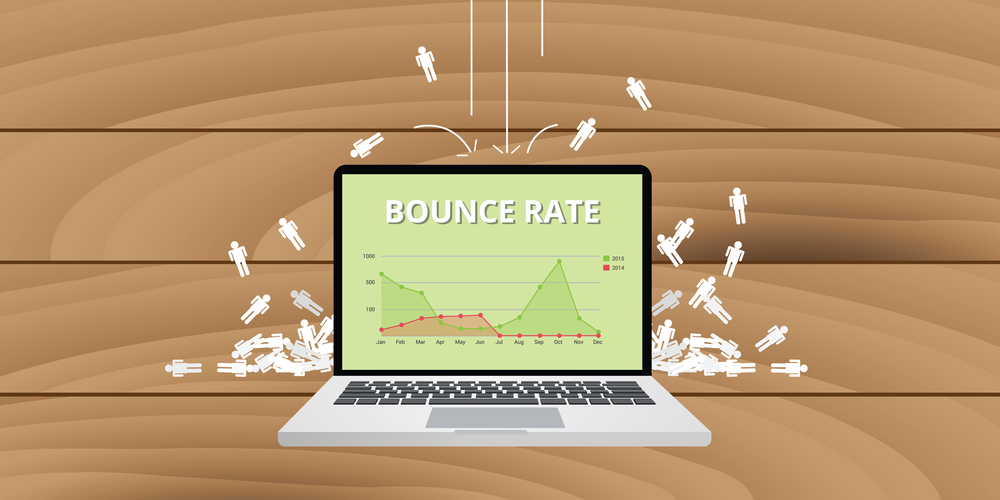31 Aug

|
Getting your Trinity Audio player ready...
|
Bounce Rate: Google Analytics is one of the most widely used analytics tools in the business world and it is available in a free and subscription version. The service provides real-time updates. For example, in the case of the lending industry, the tool generates real-time data about visitor’s needs regarding loan products and services. Some people might search for services like Personal loan, Digital Marketing, etc. Hence, using the analytic tool a lender can improve their lending service.
In this blog, we will go through one of the important concepts of Google Analytic ‘Bounce Rate’.
it has used to measures the behavior of visitors to a website or a page on a website. It is one of the most important aspects to understand the performance of a website.
Also, Read Very Important Article for Developers – 30 Google Chrome Extensions for Web Developers and Designers
Table of Contents
Bounce Rate
As said above bounce rate provides details about visitor’s behavior and how well the website if performing. To bounce from a website means leaving before interacting with the website, such as commenting or visiting another website. In other words, only initial engagement with the website and then leave it without any further interaction with it. However, this doesn’t always indicate that your website is not performing.
The goal of a website should be attracting as many visitors as possible with relevant and interesting information. With dull and uninteresting information available on your website, visitors are more likely to bounce as soon as they enter.
How it is Calculated
The number of visitors leaving a website after only visiting the lending page and not doing anything on the website/ total number of visitors to the website.
For example, if 30 visitors leave a website just after the landing page and no further interaction and total visitors are 100 then the bounce rate will be 30/100 *100 = 30%.
There are a few ways to ‘Bouncing’.
- On clicking a link to another website
- By clicking back to the previous page
- Entering the new web address and hitting enter
- By abruptly closing a browser tab
What is a Good Bounce Rate?
The Bounce rate differs from website to website. The target of 25% to 50% is not possible without any merit, but it can be superficial.
For an E-commerce website where visitors visit frequently and it can lead to sales, can be very different for other websites who only provide information, such an online dictionary, where very rarely any visitors go and a high bounce rate is possible there?
It is suggested that a website should define what is a good bounce rate for them based on different factors like the purpose of website, sector average and other metrics. This will give a better picture of it.
How to Check the Bounce Rate?
Once you have defined the bounce rate for your website, the next move is where to find the data. The data is very easy to find and understand in Google Analytics, which includes other data as well to help us understand the performance of our website.
Just sign into the website’s analytics page and follow the procedure to use it.
How to Reduce It
Once you have got the concept of ‘Bounce Rate’, the next obvious question is ‘Why your bounce – rate is high? And how you can reduce it.
There are many ways in which you can reduce the bounce rate of your website. You can check which page is performing best and you can use some features of that page on other pages as well. Here are some ways to reduce it.
- One of the simplest ways to reduce the bounce rate is to improve the content. The more interesting or the better written your content is, the more likely visitors are going to read it and stick to your website.
- Content is not just about an interesting post or entertainment-related; it should be readable also. Your website might be flooded with useful information but unless it is easily readable, visitors are bound to bounce.
- Visitors don’t like pop-ups. Hence it is better to avoid using pop-ups on your website. It irritates the visitor.
- Use targeted keywords. It is very relevant these days. Visitors search using very specific keys.
In conclusion, the bounce rate is a parameter to understand the performance of your website and to check if you are living up to customer’s expectations. Using this, you can decide which page needs more attention. Meeting visitor’s expectations will attract more visitors to your website.


